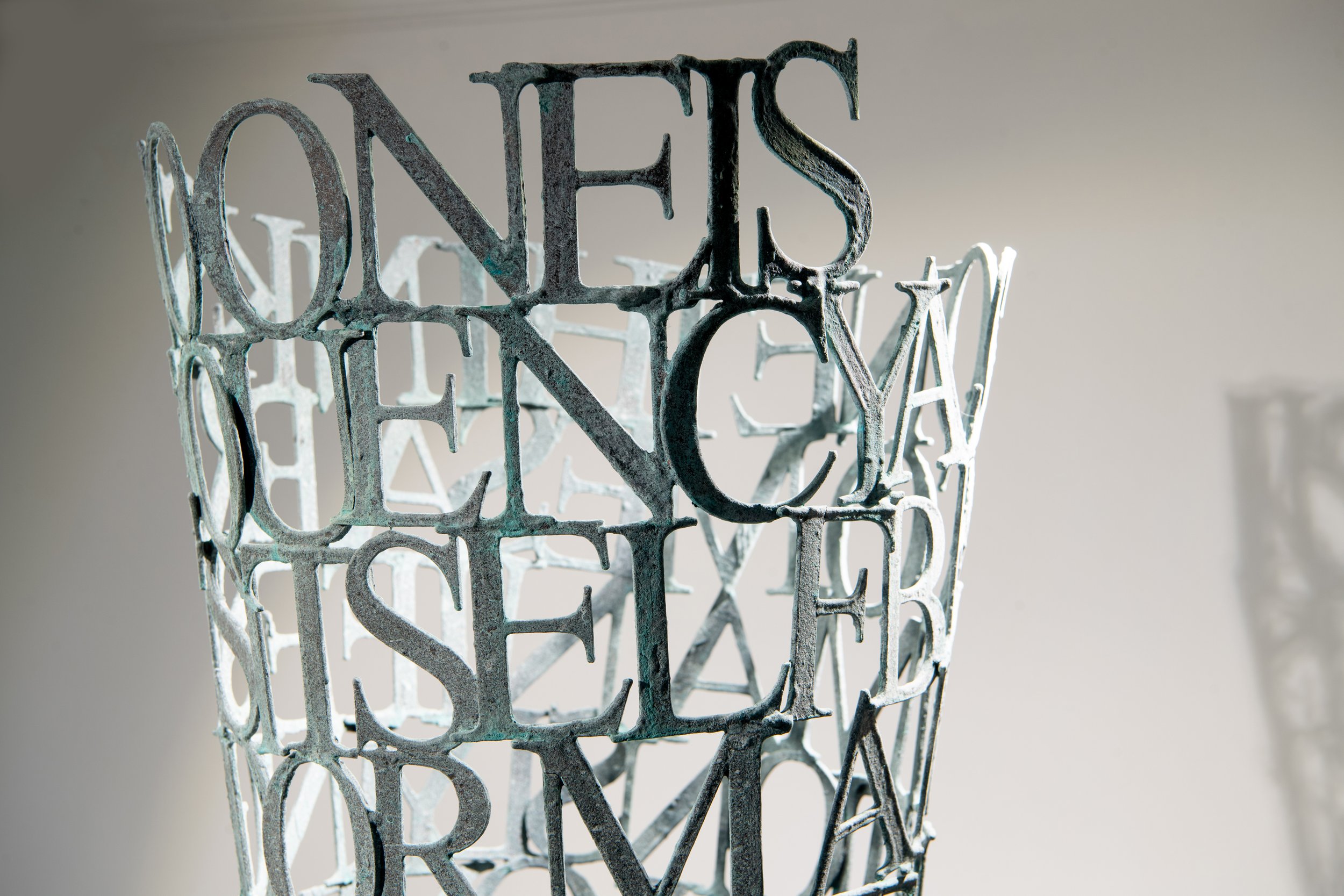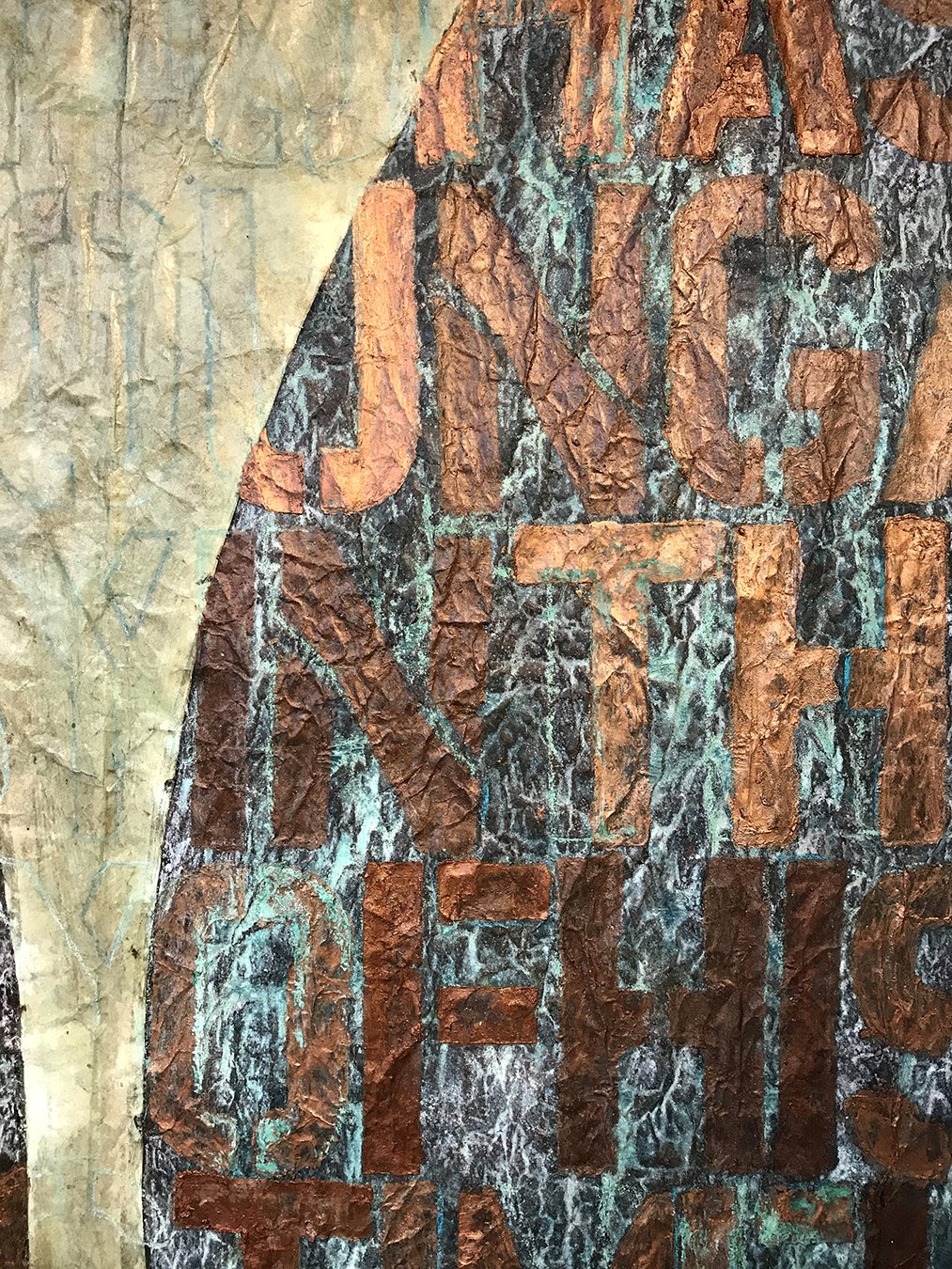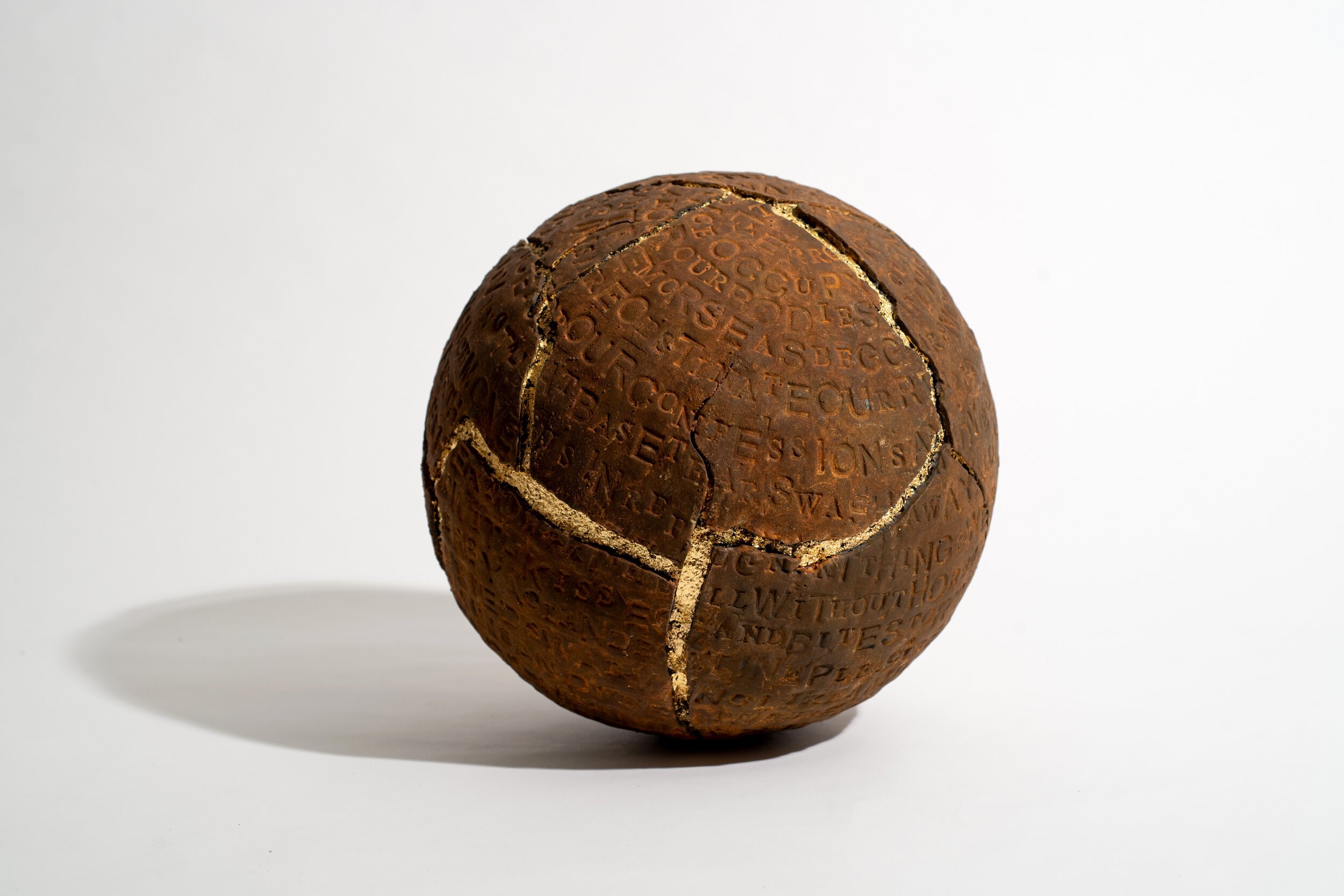Robin Crocker
-
Robin Crocker began her study of art in the northern Michigan woods, where a scholarship to the Interlochen Arts Academy afforded her access to the Visual Arts program developed by Cranbrook-educated Jean Noble Parsons. Working within that creative tradition, focused on the importance of both craftsmanship and concept, she developed skills in ceramics, metalsmithing, sculpture, and printmaking. It was an exhilarating time spent immersed in the process of mastering techniques, learning design principles, and discovering personal forms of expression. This rigorously creative environment provided challenge, and support, and fostered Robin’s unique brand of critical thinking.
-
Following a summer spent glassblowing, working in clay, paper making, and painting at the Summer Vail Art Workshop in Minturn, Colorado, alongside some of the leading American craft artists, Robin settled into her first job at the B.Z. Wagman Gallery in St. Louis. There she helped to represent and sell many of those craft artists as well as locally and nationally recognized artists.
In lieu of graduate school, Robin chose to attend the Johnson Atelier Technical Institute for Sculpture, a fine art bronze foundry owned by J. Seward Johnson, Jr., located outside of Princeton, New Jersey. In addition to developing foundry skills during the two-year apprenticeship program, she discovered an affinity for patina and was hired after completing her certification to become the Patina Department head. She worked with nationally and internationally recognized artists (e.g., George Segal, Beverly Pepper, Joel Shapiro, Claes Oldenburg, Leslie Dill, Marisol Escobar, Julian Schnabel, and Mel Kendrick) to determine and execute finishes for their new bronze work and completed restorations on numerous existing pieces (by Calder, Henry Moore, Botero, e.g.)
Robin returned to St. Louis at the invitation of Paul Guzzardo, a design/media activist, to collaborate on the design and development of a four-story loft building, 1521 Washington, into a virtual/actual nightclub (Club Kabool) and living space. Contributing both architectural design and surface finishing expertise toward the transformation of this former shoe factory, the project won an American Institute of Architects (AIA) award. While in St. Louis, she completed two significant sculpture restoration projects: The University City Lions Gates, comprised of 32 large plaques and friezes, and Michelangelo’s David, a bronze cast located in Buffalo, New York, molded from the original marble sculpture.
After completion of the 1521 Washington project, Robin moved to New York City and entered the digital design world, working for production companies specializing in large meeting events for corporate clients. CDR Architects in New York City learned of Robin's patina expertise. They contracted her to finish the interior and exterior architectural elements for their project, Eileen Fisher’s Flagship Soho Store, which garnered an AIA Award. Robin also contributed finishing expertise to Felissimo, a 1901 mid-town Manhattan townhouse turned boutique department store designed by Clodagh. Most recently, she worked with a team to patina interior steel elements in Mark Weil and Joan Hall's Jamestown, RI home designed by Trivers Associates of St. Louis. With the exception of the occasional patina project, she has worked for the past 23 years as a freelance designer through her company, OceanRoar Graphics, contracting with production companies to provide presentation design for large-scale multimedia experiences, meetings, and events for clients in the pharmaceutical, automotive, financials, fashion & fragrance industries. Robin currently works in her Bristol, Rhode Island studio.
-
InterActions | Houseguests 2021 | SPELLBIND | The Weight of Untold Tales | House Guests 2019 / 2020
From Women’s Eyes: Blue, 13.75”H x 13.75”W x 2”D (framed), Rice paper, paint, Swarovski crystals, plexiglas
From Women’s Eyes: Brown, 13.75”H x 13.75”W x 2”D (framed), Rice paper, paint, Swarovski crystals, plexiglas
From Women’s Eyes: Hazel, 13.75”H x 13.75”W x 2”D (framed), Rice paper, paint, Swarovski crystals, plexiglas
From Women’s Eyes: Green, 13.75”H x 13.75”W x 2”D (framed), Rice paper, paint, Swarovski crystals, plexiglas
From Women’s Eyes: Blue, Brown, Hazel & Green, 13.75”H x 13.75”W x 2”D each (framed), Rice paper, paint, Swarovski crystals, plexiglas
21 Taras Threshold Beads, front view
21 Taras Threshold Beads, Close up 2
21 Taras Threshold Beads, Close up 1
21 Taras Threshold Beads, front view 2
21 Taras Threshold Beads, side view
Sun Moon Stars Rain #2, 6.5"H x 5.5"W x 4"D, Wood, resin, and patina
All is too open… (for May Swenson), 41” H x 37” W x 4” D, Mixed media on paper - 1
All is too open… (for May Swenson), 41” H x 37” W x 4” D, Mixed media on paper - detail
All is too open… (for May Swenson), 41” H x 37” W x 4” D, Mixed media on paper - 3
All is too open… (for May Swenson), 41” H x 37” W x 4” D, Mixed media on paper - 4
All is too open… (for May Swenson), 41” H x 37” W x 4” D, Mixed media on paper - 2
Comme une Vielle Orange, 60” H x 60” W x 4” D, Mixed media on paper with steel - 1
Comme une Vielle Orange, 60” H x 60” W x 4” D, Mixed media on paper with steel - detail
Comme une Vielle Orange, 60” H x 60” W x 4” D, Mixed media on paper with steel - 2
Comme une Vielle Orange, 60” H x 60” W x 4” D, Mixed media on paper with steel - 3
Testimony of Light, 70” H x 18” Diameter, Wood, resin, patina, and steel, detail (In Private Collection)
Testimony of Light, 70” H x 18” Diameter, Wood, resin, patina, and steel, (In Private Collection)
Testimony of Light, 70” H x 18” Diameter, Wood, resin, patina, and steel, (In Private Collection)
Testimony of Light, 70” H x 18” Diameter, Wood, resin, patina, and steel, (In Private Collection)
Time held me green and dying… though I sang in my chains like the sea (for Dylan Thomas), 73” H x 39” W x 3” D, Mixed media on paper with steel, detail
Time held me green and dying… though I sang in my chains like the sea (for Dylan Thomas), 73” H x 39” W x 3” D, Mixed media on paper with steel
The Wish to Escape into Inner Space (for May Swenson) #4, 23” Diameter x 12.5” H, Wood, resin, and glass beads, detail
The Wish to Escape into Inner Space (for May Swenson) #4, 23”D x 12.5”H, Wood, resin, and glass beads, 1
The Wish to Escape into Inner Space (for May Swenson) #4, 23” Diameter x 12.5” H, Wood, resin, and glass beads, 2
The Wish to Escape into Inner Space (for May Swenson) #4, 23” Diameter x 12.5” H, Wood, resin, and glass beads, 3
Tower of Babel, 12.5"H x 11.25"D, Wood and Resin
Every Angelis Terrifying, 28"H x 54"W x 7"D, Mixed Media
Au Lecteur for Charles Baudelaire, 10"H x 10"W x 10"D, Styrofoam, polymer clay, steel paint, rust
Relativity for Albert Einstein, 47.88"H x 31"W x 2.75"D, Wood, paint, patina, gold pignment
Elegy, 65.5"H x 33.25"W x 2.75"D, Wood. resin, paint
Ill Go On, 23” x 23” x 3”, Mixed media on paper with Swarovski crystals
Thus Spoke Buddha, (from the Diamond Sutra), 12” x 12'“, mixed media
Pity this Busy Monster Man, (for e.e. cummings), 12” x 12” inches, mixed media
Fleur du Mal, 6.25”H x 11”W x 5”D, wood, hinge, paint, graphite
SunMoonStarsRain, 12"H x 12"W x 2.75"D, wood, vinyl, rust, paint
The Wish to Escape into Inner Space (For May Swenson) #3, 6"H x 12.75”D, wood, resin, and paint
Wish to Escape in to Inner Space, (for May Swenson), Mixed MediaI, 13” x 18”











































